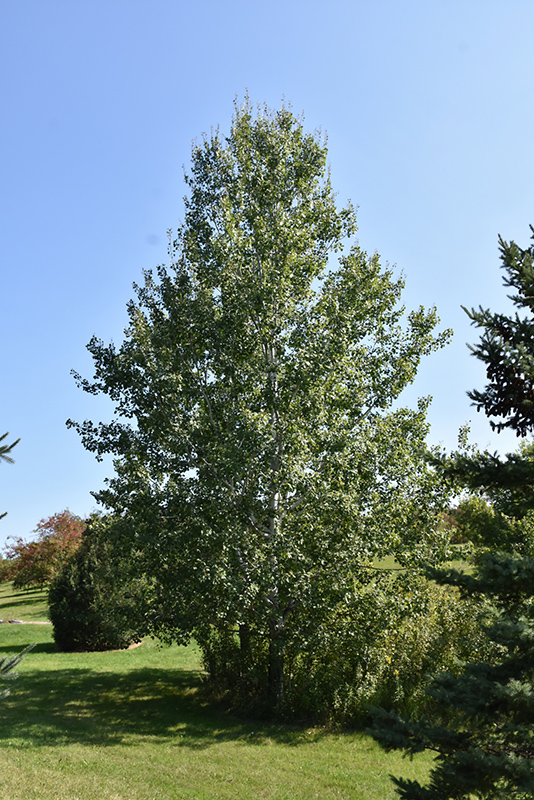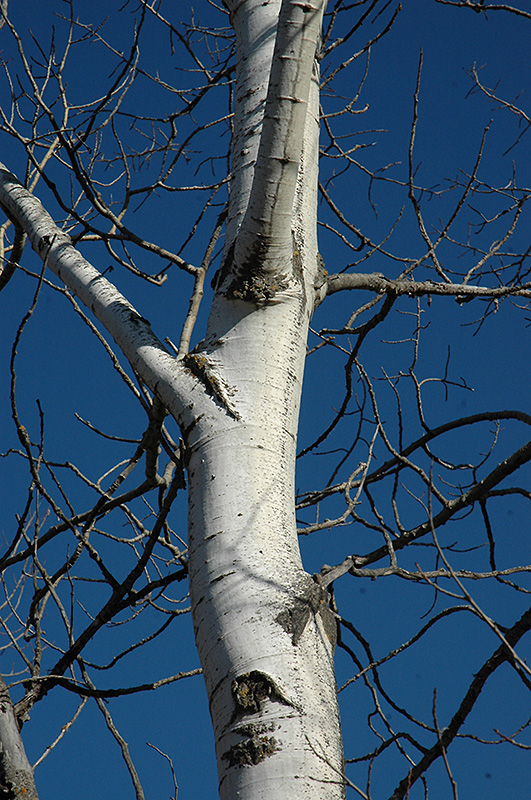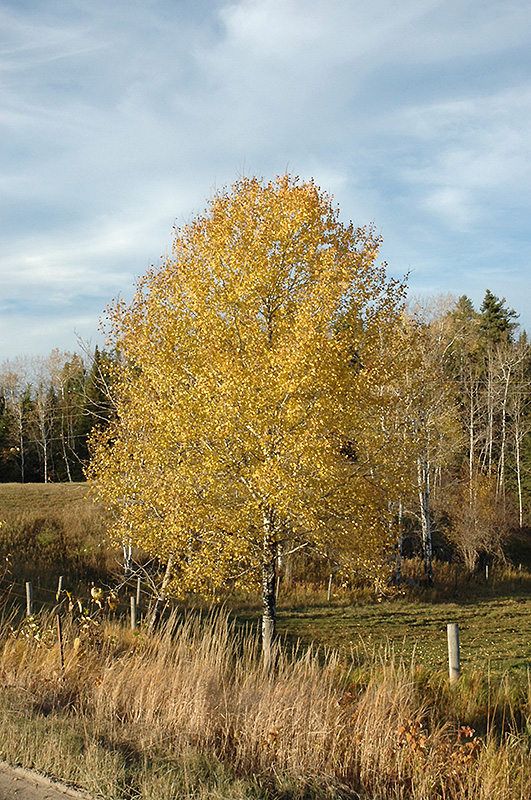Height: 80 feet Spread: 35 feet
Sunlight:
Hardiness Zone: 1a Other Names: Quaking Aspen Description: A native of the North American forest, with showy light colored bark and leaves that flutter in the faintest breeze; it can develop suckers, grow best in a natural forest setting or an open spacious location. Ornamental Features Aspen, Quaking has rich green deciduous foliage on a tree with an oval habit of growth. The round leaves turn an outstanding gold in the fall. The smooth white bark adds an interesting dimension to the landscape. Landscape Attributes Aspen, Quaking is an open deciduous tree with a shapely oval form. Its average texture blends into the landscape, but can be balanced by one or two finer or coarser trees or shrubs for an effective composition. This tree will require occasional maintenance and upkeep, and is best pruned in late winter once the threat of extreme cold has passed. Gardeners should be aware of the following characteristic(s) that may warrant special consideration; Aspen, Quaking is recommended for the following landscape applications; Planting & Growing Aspen, Quaking will grow to be about 80 feet tall at maturity, with a spread of 35 feet. It has a high canopy of foliage that sits well above the ground, and should not be planted underneath power lines. As it matures, the lower branches of this tree can be strategically removed to create a high enough canopy to support unobstructed human traffic underneath. It grows at a fast rate, and under ideal conditions can be expected to live for 50 years or more. This tree does best in full sun to partial shade. It is quite adaptable, prefering to grow in average to wet conditions, and will even tolerate some standing water. This plant should be periodically fertilized throughout the active growing season with a specially-formulated acidic fertilizer. It is not particular as to soil type or pH. It is somewhat tolerant of urban pollution. This species is native to parts of North America. Special Attributes Aspen can, but do not regularly produce 1 1/2 inch catkins opening to cotton-like blooms early spring. No seeds. It grows best when deep watering is maintained through the growing season.![]()
![]()
![]()
![]()
![]()
![]()
![]()
![]()
![]()
![]()
![]()



